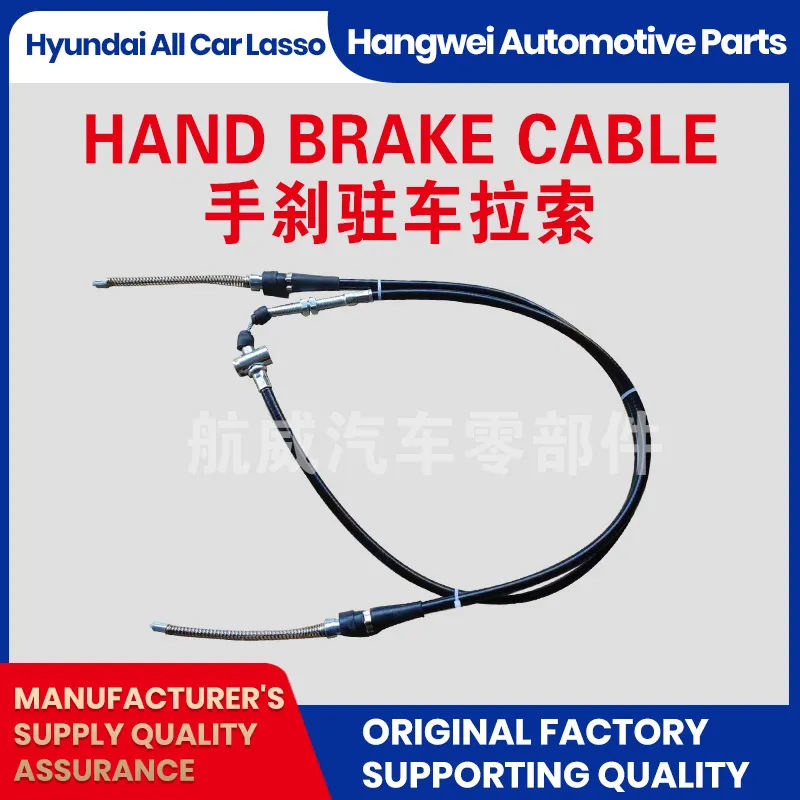manual throttle cable
Understanding Manual Throttle Cables A Comprehensive Guide
In the world of automotive and mechanical engineering, the manual throttle cable plays a crucial role in the operation of many vehicles and machines. While modern vehicles have largely transitioned to electronic throttle control systems, the manual throttle cable remains prominent in various applications and older vehicle models. This article delves into the mechanics, applications, and maintenance of manual throttle cables.
What is a Manual Throttle Cable?
A manual throttle cable is a flexible conduit that connects the accelerator pedal in a vehicle to the throttle body of an engine. When the driver presses the accelerator pedal, the cable pulls on the throttle lever, allowing more air and fuel into the engine, which in turn increases engine power and speed. The simplicity of the throttle cable mechanism is one of the reasons it has stood the test of time, particularly in simpler or off-road vehicles, motorcycles, and older cars.
Components of a Throttle Cable System
A standard manual throttle cable system consists of several key components
1. Cable Housing This is the outer casing that protects the inner cable from damage and environmental factors. It is usually made of durable materials like plastic or metal.
2. Inner Cable The inner cable is a thin, steel wire that runs through the housing. It is the component that actually transmits the movement from the accelerator pedal to the throttle body.
3. Ball Joints and Connectors At either end of the cable system, you'll find ball joints and connectors that allow for smooth movement and can accommodate minor misalignments and angles.
4. Adjusters Many throttle cables come with adjusters that allow for fine-tuning of the cable length and tension, ensuring responsive throttle control.
Applications of Manual Throttle Cables
Manual throttle cables are commonly found in various vehicles and machines, including
- Classic Cars Older vehicles predominantly used cable systems before the advent of electronic throttle controls. Classic car enthusiasts often appreciate the mechanical feedback provided by throttle cables.
- Motorcycles Most motorcycles still utilize manual throttle cables due to their simplicity and reliability, giving riders precise control over engine power
.manual throttle cable

- Snowmobiles and ATVs Off-road vehicles frequently use throttle cables to ensure robust performance in challenging conditions.
- Marine Engines Many boats and marine engines retain throttle cables. The resistance to corrosion is secured by using stainless steel cables and protective casings.
Advantages of Manual Throttle Cables
1. Simplicity The mechanical nature of throttle cables makes them straightforward to understand and repair. In the event of a failure, they can typically be replaced or adjusted without specialized diagnostic equipment.
2. Direct Feedback Drivers often prefer the tactile feedback provided by a cable system, as it delivers immediate responsiveness to throttle input.
3. Cost-Effective Manual throttle cables can be more affordable than their electronic counterparts, both in terms of initial cost and ease of repairs.
Maintenance of Manual Throttle Cables
To keep a manual throttle cable functioning efficiently, regular maintenance is essential
1. Visual Inspection Periodically inspect the throttle cable for signs of wear, fraying, or corrosion. Early detection can prevent larger issues.
2. Cleaning and Lubrication Keeping the cable and its housing clean and well-lubricated ensures smooth operation. Use appropriate lubricants designed for cables to prevent seizing or binding.
3. Tension Adjustment If the throttle feels sluggish or unresponsive, check the cable tension and adjust as necessary using the integrated adjusters.
4. Replacement If a cable sustains significant damage or wear, it’s critical to replace it promptly. Operating a vehicle with a malfunctioning throttle cable can lead to poor performance or even hazardous driving conditions.
Conclusion
The manual throttle cable, while often overshadowed by newer electronic systems, remains an essential component in many vehicles and machines. Understanding the function, applications, advantages, and maintenance of throttle cables can help enthusiasts and operators ensure optimal performance and longevity. Whether you’re a classic car enthusiast or a motorcycle rider, appreciating the simplicity and reliability of the manual throttle cable adds to the overall experience of vehicle operation.
-
Upgrade Your Control with Premium Throttle CablesNewsAug.08,2025
-
Stay in Control with Premium Hand Brake CablesNewsAug.08,2025
-
Experience Unmatched Performance with Our Clutch HosesNewsAug.08,2025
-
Ensure Safety and Reliability with Premium Handbrake CablesNewsAug.08,2025
-
Enhance Your Vehicle with High-Performance Clutch LinesNewsAug.08,2025
-
Elevate Your Ride with Premium Gear CablesNewsAug.08,2025
